Just as there are a large number of animal species in our world, plants and flowers are not far behind, and this has made them an excellent source of inspiration for the Pokémon creators over the years, which led us to bring you today’s list of the 26 best such species.
Quick Links
- Best Flower and Plant Pokémon
- 1. Shaymin
- 2. Florges
- 3. Tsareena
- 4. Roserade
- 5. Venasaur
- 6. Exeggutor
- 7. Victreebel
- 8. Tangrowth
- 9. Gourgeist
- 10. Lurantis
- 11. Vilepume
- 12. Torterra
- 13. Celebi
- 14. Tropius
- 15. Whimsicott
- 16. Meganium
- 17. Lilligant
- 18. Sudowoodo
- 19. Cacturne
- 20. Trevenant
- 21. Bellossom
- 22. Eldegoss
- 23. Carnivine
- 24. Maractus
- 25. Cherrim
- 26. Jumpluff
- Final Thoughts
Best Flower and Plant Pokémon
1. Shaymin

The protagonist of the 11th film in the franchise takes the top spot in our list for being both the most adorable Pokémon in it as well as for being capable of changing its form into a more battle-oriented one.
Shaymin is a Mythical Pokémon that wasn’t officially revealed until the movie starred was announced.
Later, it was also revealed that it could change between a Land Forme and a and a Sky Forme that turn it into a Grass/Flying-type.
While in its Land Forme, the Gratitude Pokémon can bloom with flowers in its backs and resemble a bouquet of flowers.
2. Florges
Another species that comes with various forms, Flroges, was introduced in Generation VI and reached its final form after being exposed to a Shiny Stone.
However, unlike Shaymin, its forms only have esthetic differences among themselves and can’t be changed at will.
In fact, the color of its flower will be carried over through its evolutionary line as well as over its offspring.
Also, Florges type combination and high special defense can help develop diverse strategies in battle to use all of its potential, and its colorful design will make fans of flowers fall in love with it.
3. Tsareena
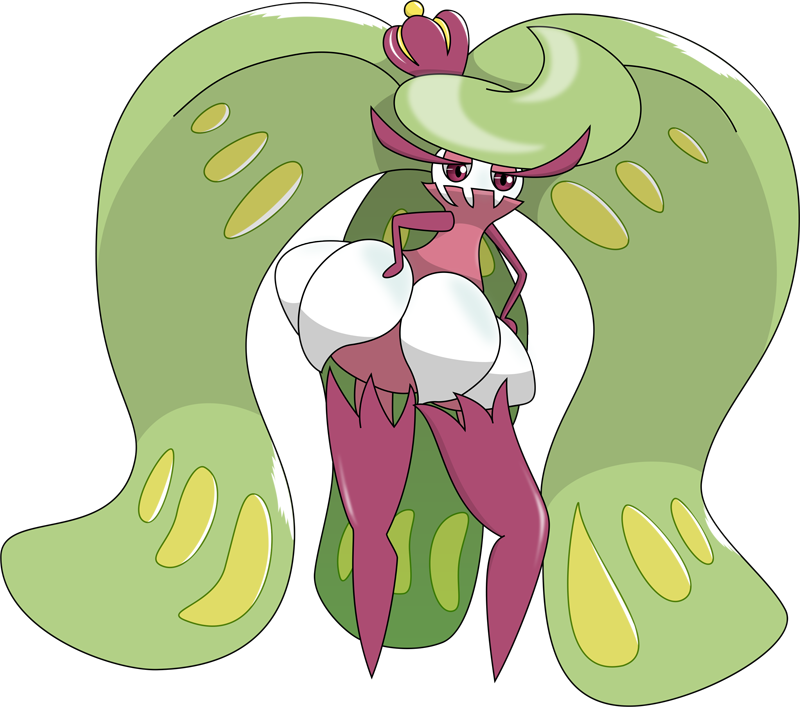
With the name and appearance of a monarch, as well as elements of mangosteen integrated into its design, Tsareena can easily attract the attention of any trainer that’s keen on royalty or fruits.
As it’s in part inspired in a queen, all Pokémon belonging to its evolutionary family are female.
Its queen status is reflected in the way its fights, as it was shown in the anime that it performs its moves with much grace, including its signature Trop Kick.
It also takes on the responsibility of taking care of its pre-evolved forms, as it’s known that only the strongest among them are capable of evolving into Tsareena.
4. Roserade
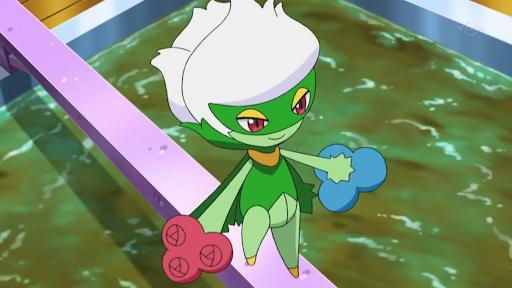
The Bouquet Pokémon was introduced in Generation IV as the final form of Roselia and, much like Tsareena, it also has an elegant appearance while incorporating rose-like elements and a masquerade attire.
Its grace has made it common for it to be used it Pokémon contests, as in the anime, Drew and Nando both had a Roserade in their respective teams that excelled at performing during them.
But this doesn’t take away from its potential in battle. Roserade is a very powerful grass-type, and this is reflected in the fact that’s in the party of both a Gym leader and the rival in the Diamond, Pearl, and Platinum games.
5. Venasaur
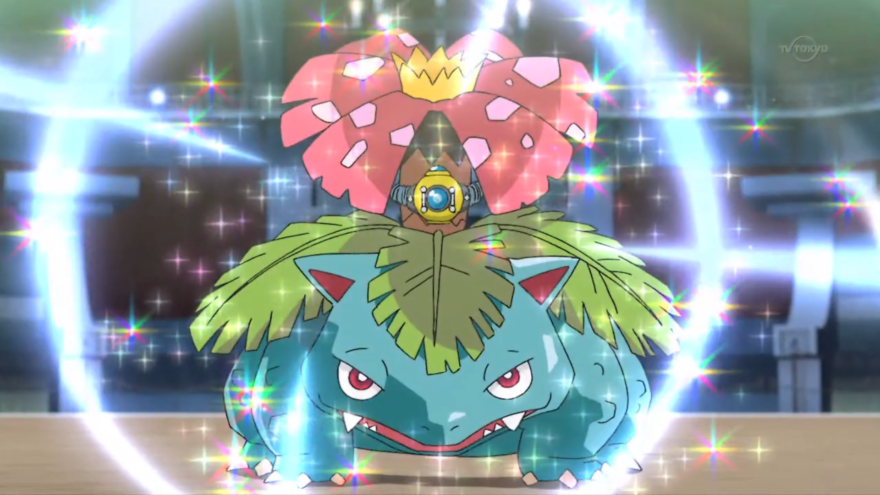
A classic Pokémon and one of the Generation I starters, Venasaur was introduced as one of the original 151 species with which the franchise made its debut in the 90s and was the game mascot of the original Pokémon Green and of its remaster, PokémonLeafGreen.
A frog inspired its design, and it can use the flower and frond on its back to gather solar light as well as a source for many moves in battle.
Though it has been considered by some fans as the worst starter in its Generation, in part due to the games being harder by choosing it, Venasaur has received both a Mega Evolution and a Gigantamax form that make it a more powerful Pokémon overall.
6. Exeggutor
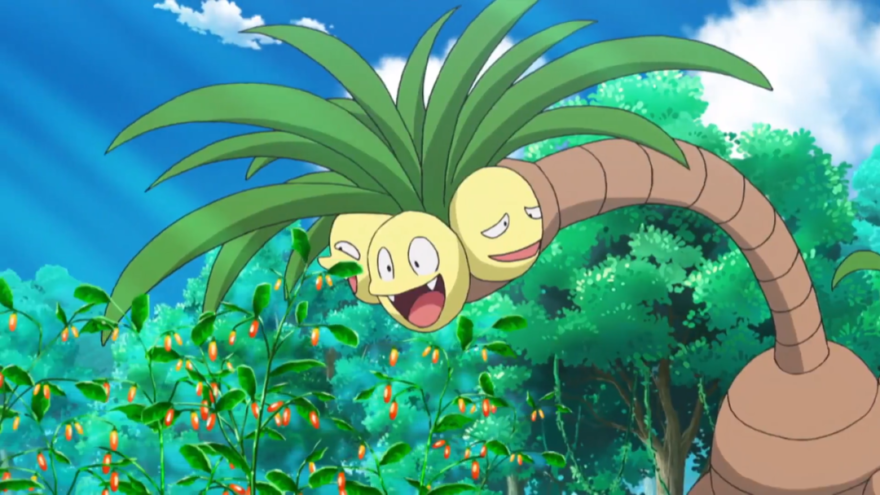
Exeggutor is based on a palm tree, but its original form and its pre-evolution didn’t make this completely clear.
However, by the time Generation VII was introduced, Exeggutor received a new regional form that made it grow much taller and better resemble a palm tree while also giving it a tail and changing its type to Grass/Dragon.
AlolanExeggutor’s added size makes it the tallest and heaviest Grass-type, and its new type combination makes it more versatile in battle while also making it the only species capable of learning the move Dragon Hammer.
7. Victreebel
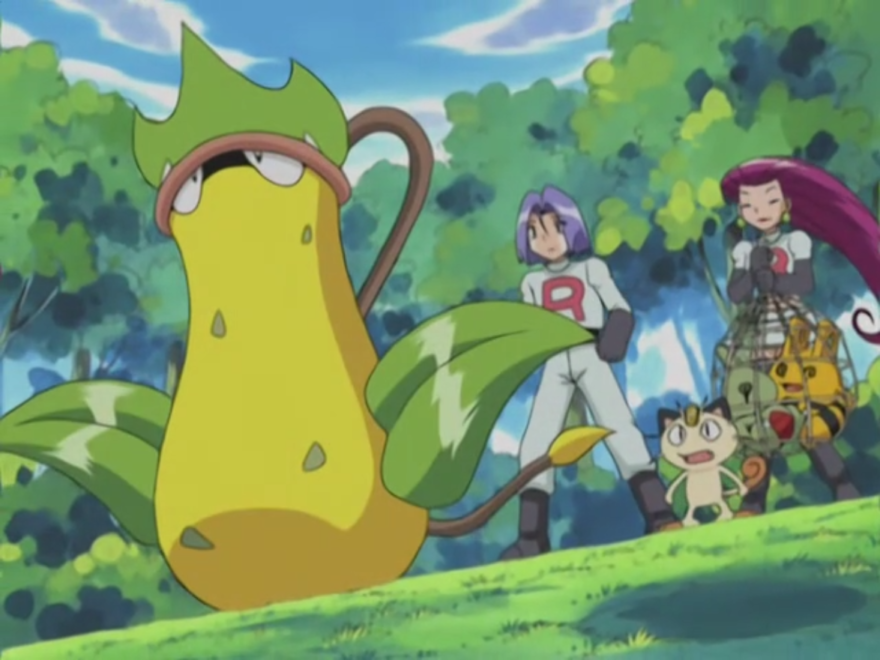
Inspired by a carnivorous plant, Victreebel is a Gen I Pokémon that reaches its final form when exposed to a Leaf Stone.
Tough its appearance and carnivorous status would make it look like an unfriendly Pokémon, the anime showed that this wasn’t always the case as James caught one and used it as its primary Pokémon.
This Victreebel was very affectionate towards its trainer and would regularly chomp down on his head to show it.
However, in the end, it fled away from team Rocket with another Victreebel after being traded away.
8. Tangrowth

The Vine Pokémon made its debut in Generation IV as the evolved form of Tangela, and while its design doesn’t change too much from its previous form, its power and value certainly do.
Tangrowth has a very good defense and special attack, making it a well-rounded Pokémon despite its low speed.
The list of moves that it can learn and the fact that it can learn moves that are strong against most of the types that it’s weak against makes it a very versatile species and a great addition for any team.
9. Gourgeist
Gourgeist, along with its pre-evolution, comes in four different variations depending on its size: Small, Average, Large, and Super and each form has slight differences from the others in their base stats and abilities.
This Pokémon is based both in a pumpkin and a candle and could represent the lanterns that are often used in Halloween.
Gourgeist also has a very interesting learnset as its capable of learning fire and fighting-type moves, making it a very versatile option in battle that can cover its weaknesses up.
10. Lurantis

Lurantis was introduced in Generation VII and reached its final form by leveling up in the day.
Its design is a very elegant one and seems to combine elements of an orchid flower with an orchid mantis as well as with a kimono.
The Bloom Sickle Pokémon’s gracious appearance requires a lot of grooming, and if its trainer is capable of taking good care of it, Lurantis will have an easier time trusting it.
But aside from its looks, Lurantis also stands out for the way it gathers light to use it as a source of attack by turning it into laser beams and into its powerful Solar Blade.
11. Vilepume
Along with Bellossom and Bellsprout, Vileplume has the category of the Flower Pokémon as its design was inspired by a very specific and foul-smelling flower: The Rafflesia Arnoldi.
Its appearance is very similar to that of both Oddish and Gloom.
The difference is that the flower on its head has fully blossomed into a large and heavy specimen that Vileplume can use to release toxins to make its opponents’ lives harder.
And because it reaches its final form after being exposed to a Leaf Stone, Vileplume can’t usually be found on the while. However, its pre-evolved forms can be caught in most of the main games, giving trainers the option to evolve it to add it to their team.
12. Torterra

Torterra made its debut in Generation IV as the final form of Turtwig, Sinnoh’s Grass-type starting Pokémon, and received both a great-looking design and a unique type combination that make it a versatile Pokémon in battle.
As a Grass/Ground-type, the Continental Pokémon can adapt to different strategies as it can learn HP-draining attacks as well as devastating moves such as Earthquake, but it must be very careful against Ice-types.
In the anime, Torterra had two major roles during the Sinnoh seasons as both Ash and its rival, Paul, had evolved one in their respective teams.
13. Celebi
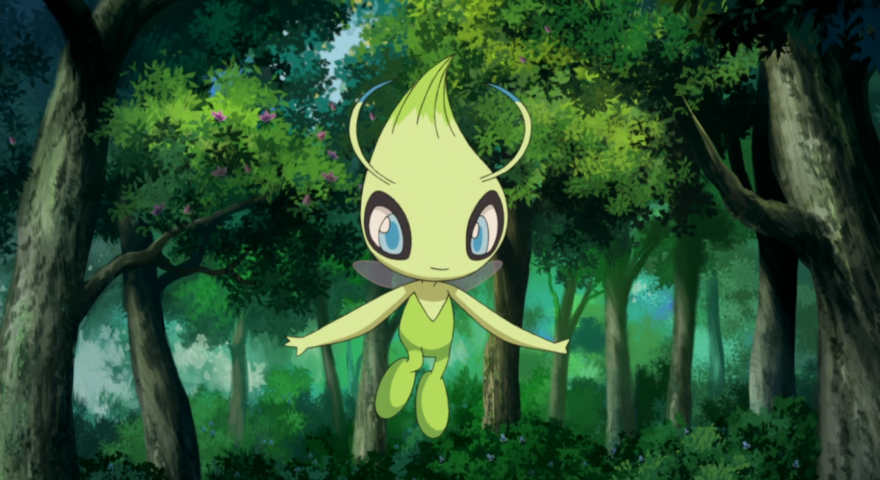
Known as a forest deity, Celebi is inspired both by a fairy and a plant bulb, and it usually has a role as a guardian of nature.
The Mythical Pokémon can travel in time, which has helped it be part of several stories in the anime, movies, main games, and side games, including the plot of Pokémon Mystery Dungeon: Explorers of Time and Darkness.
And while it was almost impossible to catch it before, in 2018, Celebi became obtainable in the Virtual Console release of Pokémon Crystal.
14. Tropius
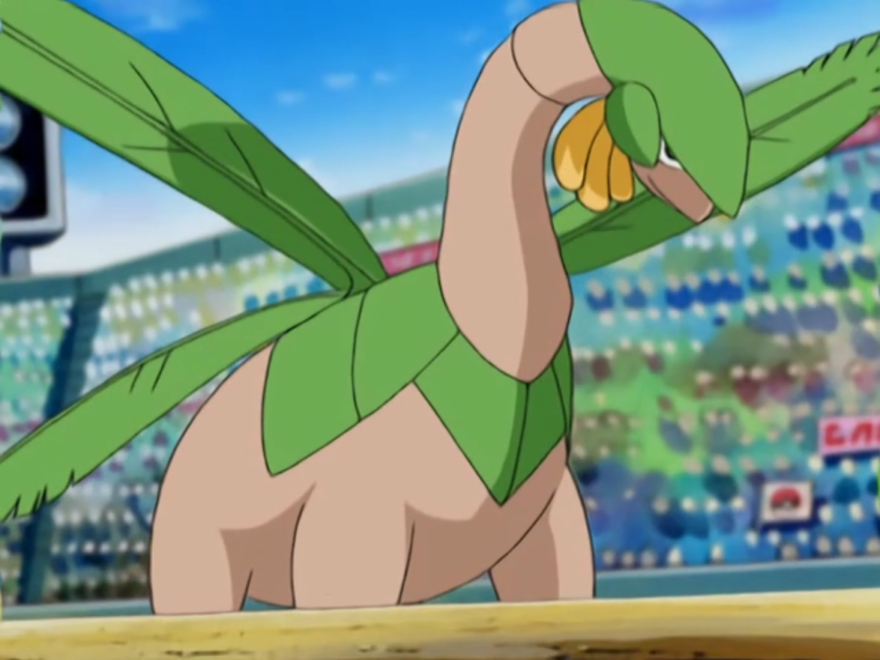
The fruit Pokémon made its debut in Generation III, and its category comes from the fact that it grows banana-like fruits from its body, which is said to have been caused after Tropius ate many of them.
Its appearance resembles that of a dinosaur combined with a banana plant, but the most interesting thing about its look might be the green leaves that grow on the back of its body, as Tropius can use them to fly, given that it has a curious Grass/Flying-type combination.
15. Whimsicott
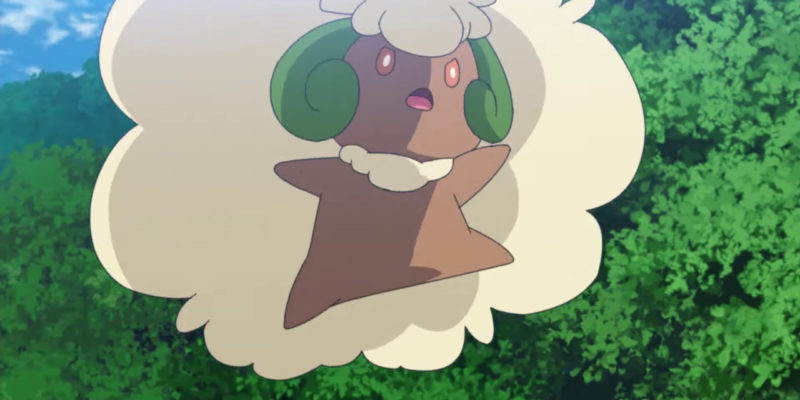
Whimsicott has one of the most adorable appearances among plant-inspired Pokémon, which is a common trait for Fairy types.
The Windveiled Pokémon was originally introduced in Generation V as a pure Grass-type but received Fairy as its secondary type starting from Generation VI.
Based on a ball of cotton, Whimsicott will make you want to hug it as much as possible, but be careful, as it’s known to have a mischievous behavior and enjoys using its ability to make pranks on people and other Pokémon.
16. Meganium
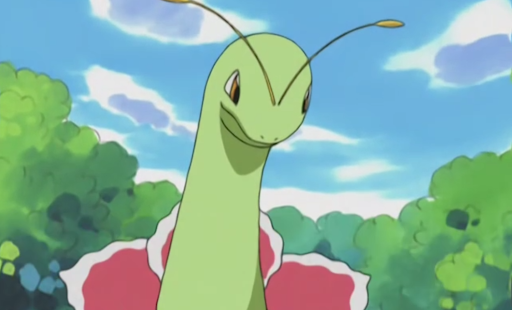
The final form of Chikorita, Meganium, made its debut as one Generation II starters and became popular for being the starting Pokémon of Both Casey and Vincent in the anime.
Its appearance isn’t too different from that of Bayleef or Chikorita as all three forms are based on a dinosaur, with the only notable changes being in its color pattern, the two antennae on top of its head, and the flower that surrounds its neck.
The Herb Pokémon makes justice to its category by having regenerative powers as its breath can heal plants and even affect those who are nearby.
17. Lilligant
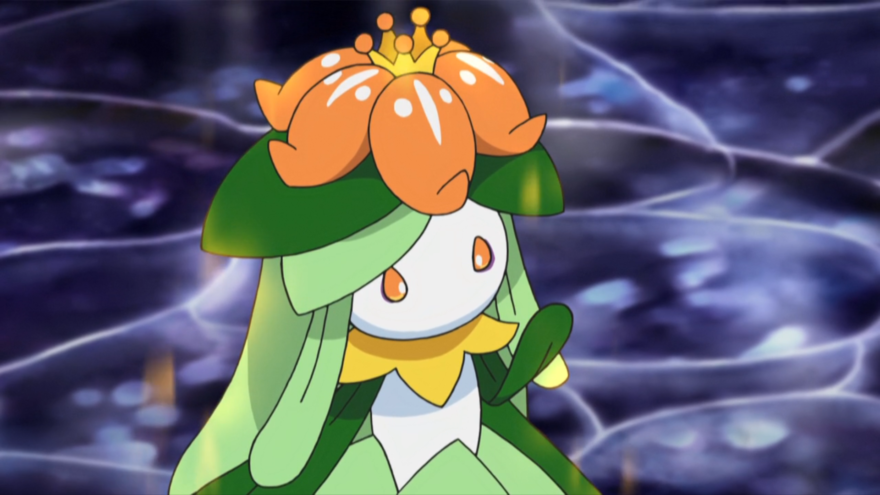
The Flowering Pokémon was introduced in Generation V as the evolved form of Petilil, and its design would seem to be based on different species of plants and flowers.
As its name indicates, Lilligant also takes inspiration from elegant people, specifically from women, as its evolutionary line is a female-only species.
The flower on top of its head also resembles a crown, which makes it look like a queen.
Because of its appearance and the scent and oil that are produced by its flowers, Lilligant is popular among gardeners and celebrities alike in the Pokémon world.
18. Sudowoodo
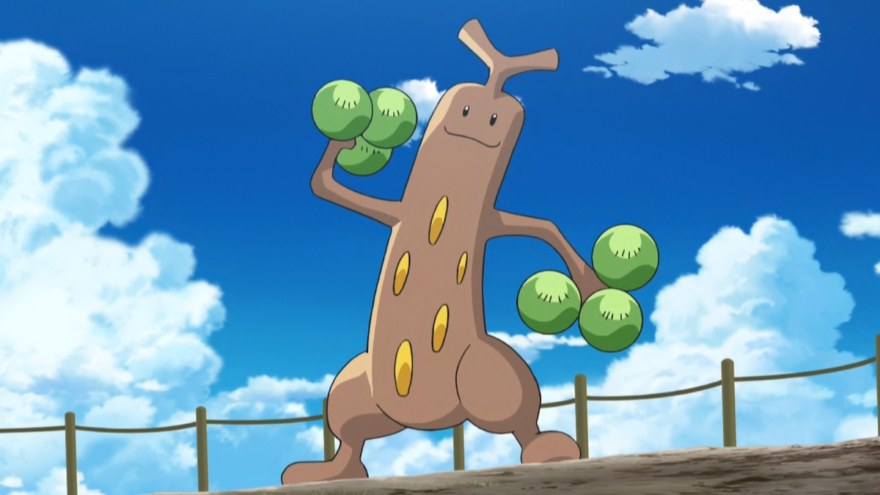
Along with Florges, Sudowoodo is the only Pokémon in our list that is not a Grass-type, which is curious given the fact that it disguised itself as a tree in some of the games to block our path.
Still, that doesn’t take anything away from the Imitation Pokémon as it’s able to learn an ample list of powerful moves that can make it very useful in battle for any trainer.
And fans of the older anime seasons might remember how Brock’s Bonsly went from being a crybaby to a reliable partner in battle after it evolved into Sudowoodo.
19. Cacturne
Cacturne is among the Pokémon with a less friendly look on today’s list, but that’s because it was created as a combination of a scarecrow and a cactus.
Its tough-guy image is only reinforced by the fact that it’s a nocturnal Pokémon that takes advantage of the night to search for prey.
And though we never got to see James’ loving Cacnea evolving into a Cacturne, the Scarecrow Pokémon still had a major role in the Hoenn seasons as the main Pokémon of Harley, one of May’s rival Pokémon coordinators.
20. Trevenant

Just like Cacturne, the Elder Tree Pokémon doesn’t look like it makes too many friends based on its spirit-like appearance.
Still, despite the looks of this ghostly tree, Trevenant cares deeply for the forests in which it lives in as well as for the creatures that live will it and will act very kindly towards people and Pokémon who show appreciation for them.
But it will become trouble for those who threaten its home or its friends given the deep pool of attacks that it can learn, which includes its signature move Forest’s Curse.
21. Bellossom
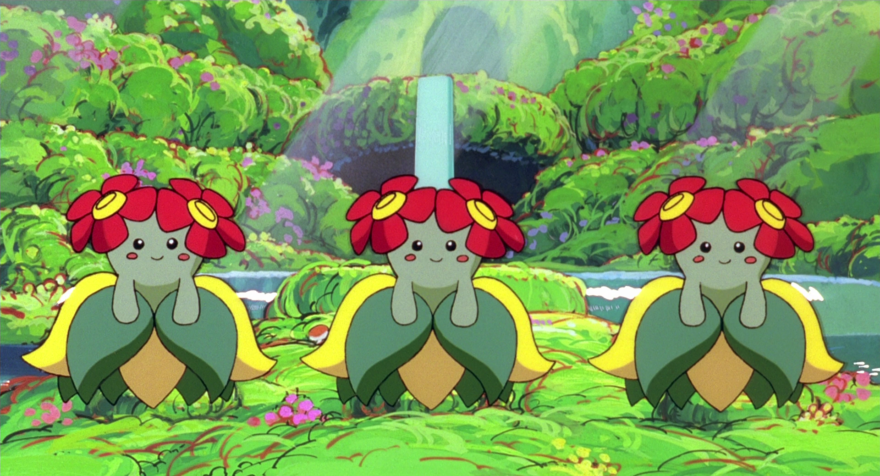
Making its debut in Generation II, Bellossom was introduced as an alternative final form from Vileplume in the Oddish’s evolutionary line, being obtainable when a Gloom is exposed to a Sun Stone.
After evolving, Bellossom’s appearance changes drastically when compared to its previous forms, as it now resembles a hula dancer.
But, curiously, it can’t be found in Alola despite the region being based on Hawaii.
22. Eldegoss
The Cotton Bloom Pokémon made its debut in Generation VIII to challenge Whimsicott for cotton-ball supremacy.
However, aside from the fact that cotton is an important part of its body, Eldegoss’s design is very different from that of Whimsicott as it lacks any extremities, and its cotton resembles an afro while Whimsicott’s instead looks more like a sheep.
23. Carnivine

Just like there are multiple cotton-inspired Pokémon in our list, there are multiple carnivorous plant-inspired species as well, as Carnivine was introduced as the second Pokémon to take inspiration from such specimens after Victreebel.
In the anime, Carnivine was one of James’ Pokémon during the Sinnoh seasons, and, much like Victreebel and Cacnia before it, the Bug Catcher Pokémon developed a great affection towards its trainer.
As a curious fact, James’ Carnivine has been the only one of its species to have been featured in the anime.
24. Maractus
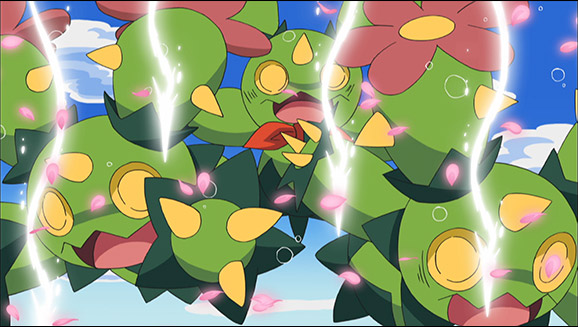
Maractus made its debut in Generation V, and, just like Cacturne, it takes inspiration from cactuses while also resembling a bunny.
The Cactus Pokémon is also based on maracas and Spanish dances as it makes sounds that resemble the instrument whenever it moves rhythmically.
Curiously, Maractus could only be found at first in desert-like areas, but it would be hurt by sandstorms.
So, if you ever caught one, you may have made its life much easier.
25. Cherrim
Cherrim is one of the Pokémon that better represent plants given that it has two forms and changes between one and the other depending on the weather as it will turn into its Sunshine Form during harsh sunlight and will remain in its Overcast Form otherwise.
From Generation V onward, this variation is caused by its signature ability, Flower Gift, which, aside from changing its appearance, raises Cherrim’s and its allies’ Attack and Special Defense stats.
26. Jumpluff
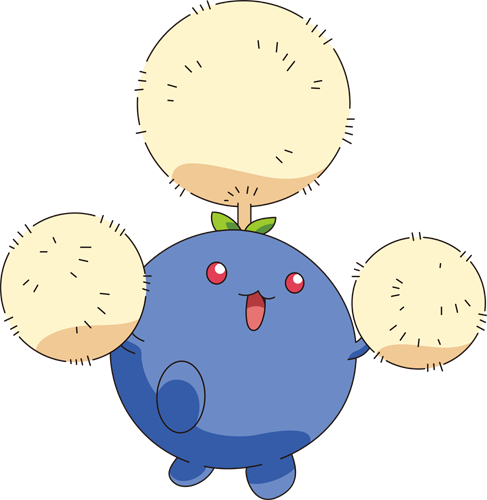
The Cottonweed Pokémon was introduced in Generation II and had one of the loveliest designs, even among cotton-inspired Pokémon.
Its appearance resembles that of a dandelion on the final stages of its life-cycle, and the cotton puffs on its arms look like pom poms.
These cotton puffs help it maneuver while floating by releasing spores, allowing it to maintain control when on the air, even if there are strong winds around it.
But though it can make any trainer’s life better, it will have to be very careful against Ice-types due to its Grass/Flying-type combination when it comes to battle.
Final Thoughts
Overall, Pokémon has been a reflection of the number of living creatures that exist in our world, and the fact that there are so many species that are based on real-life flowers and plants goes on to show the diversity that exists in nature and how that diversity can make any entertainment product even better.
And while we could only include 26 species in today’s list, there are many more Pokémon available that fans of nature will enjoy, and knowing how the Pokémon franchise works, there will surely be even more to come soon.
You might also be interested in:


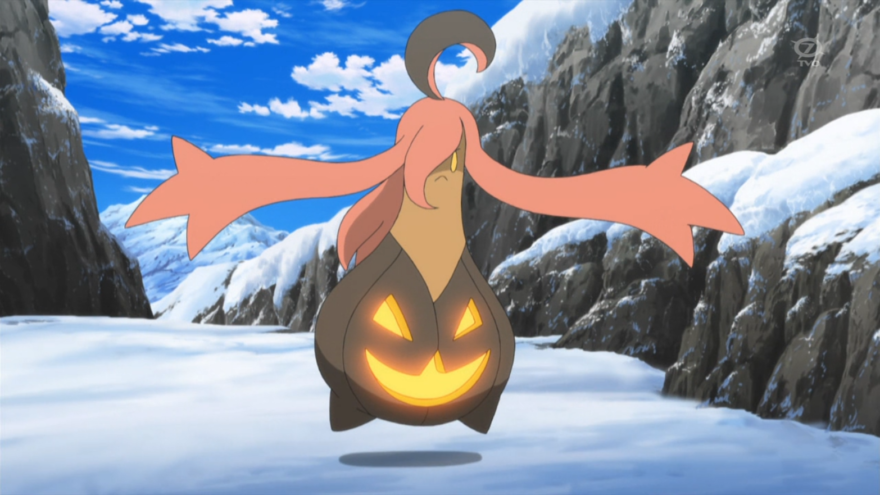
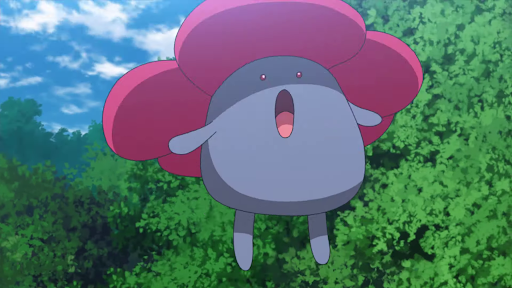
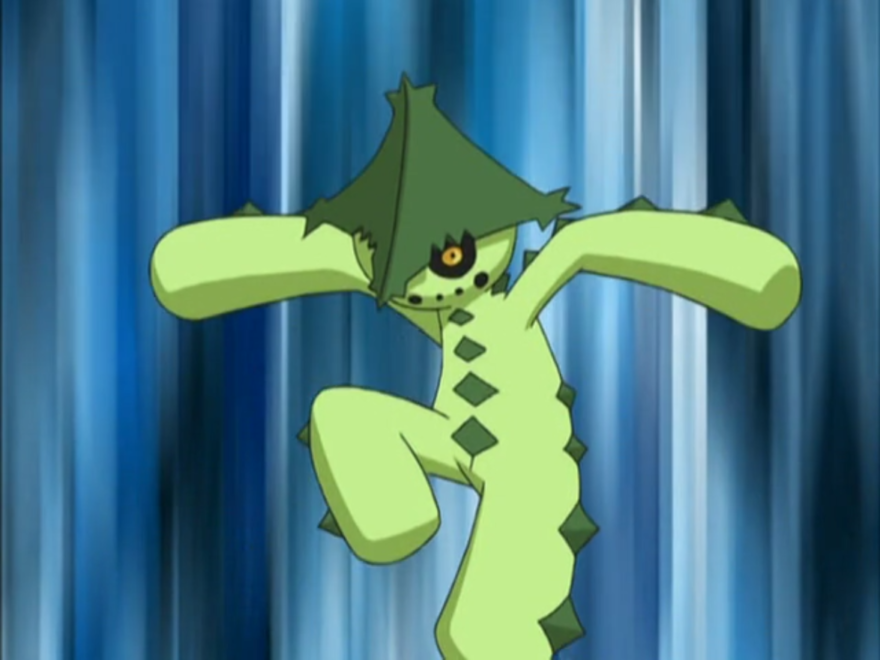
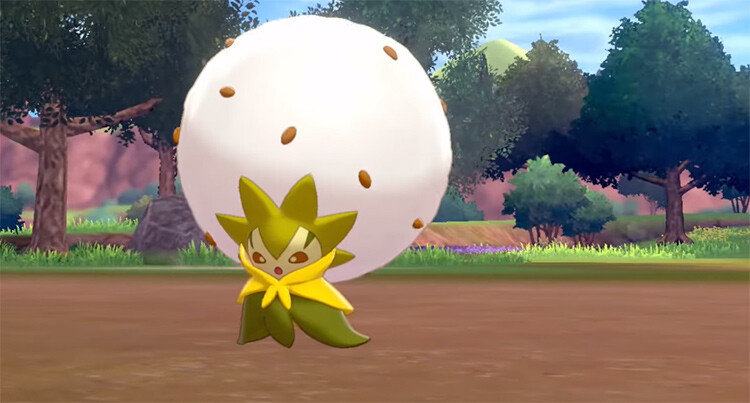
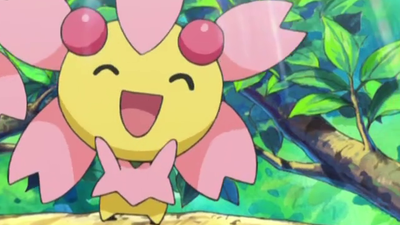
Top 26 Best Grass-Type Pokémon [2021]
Tuesday 21st of September 2021
[…] it can be evolved into either the Flower Pokémon Vileplume or Bellossom through a Leaf Stone or Sun Stone, […]